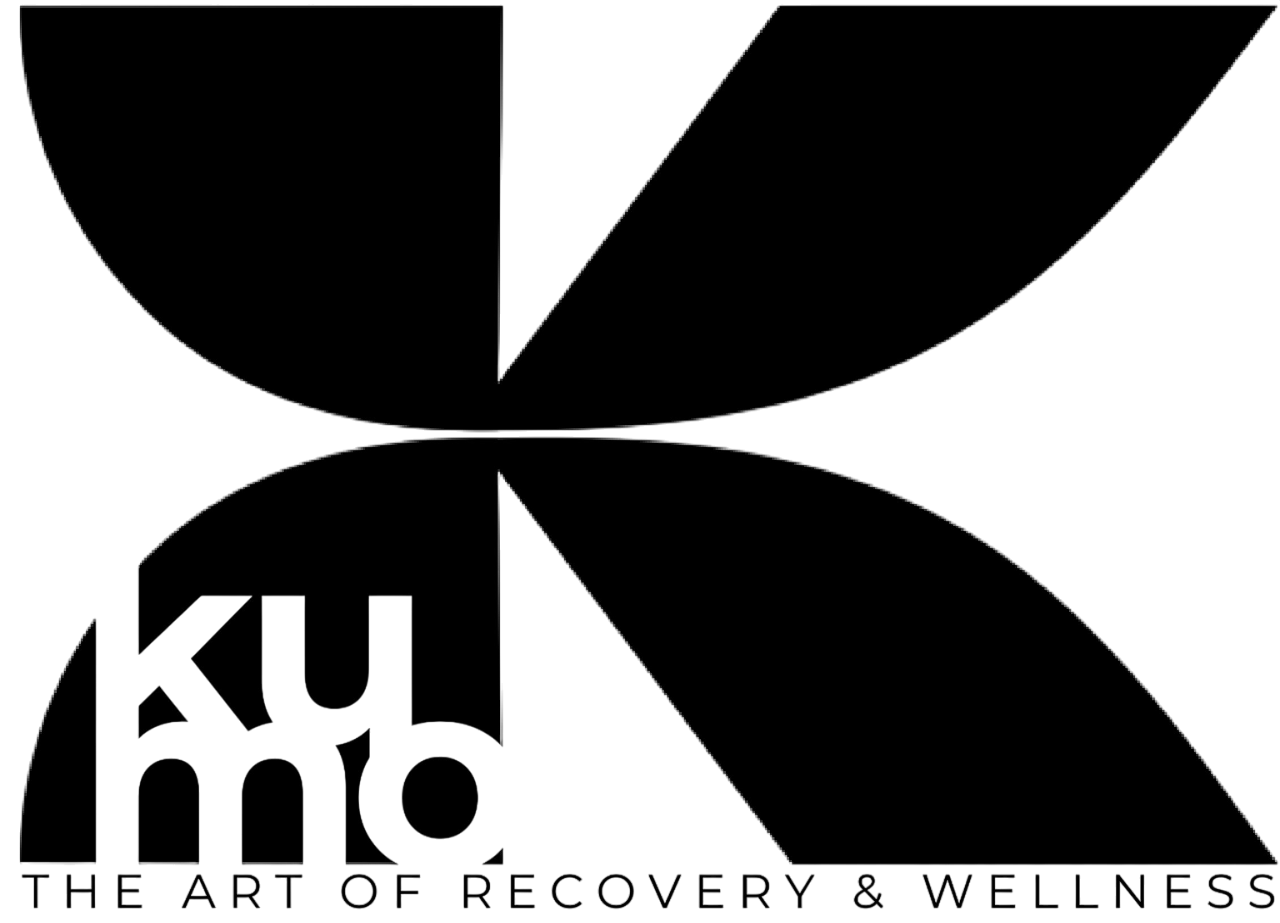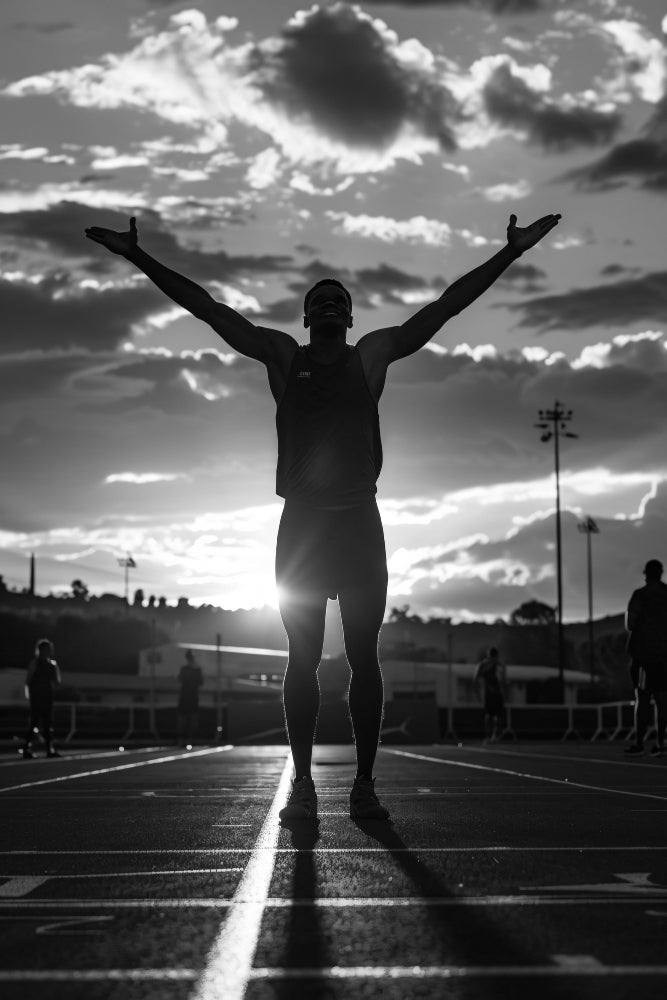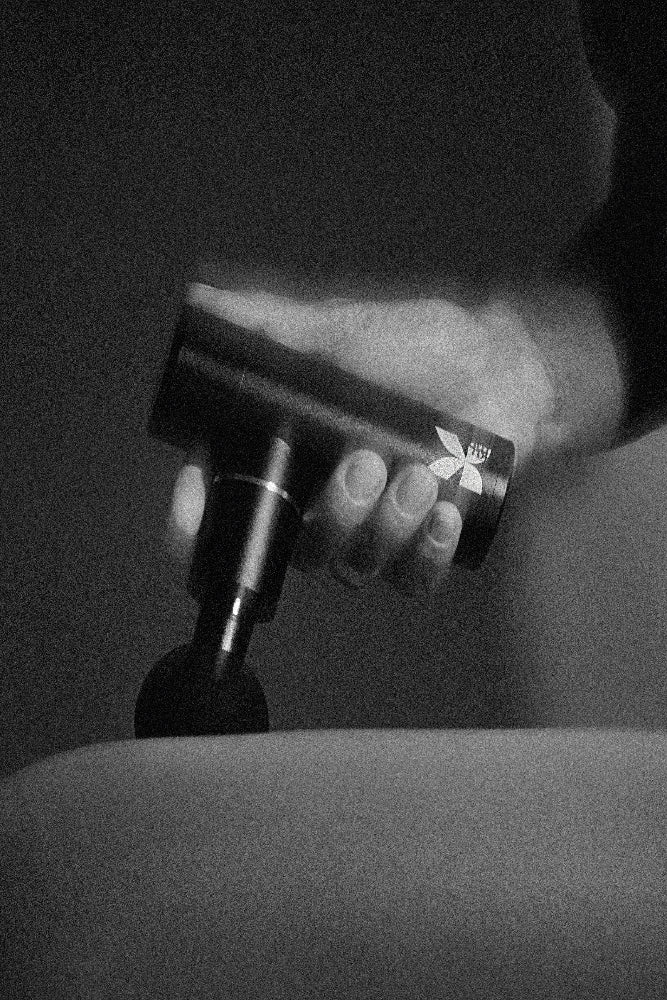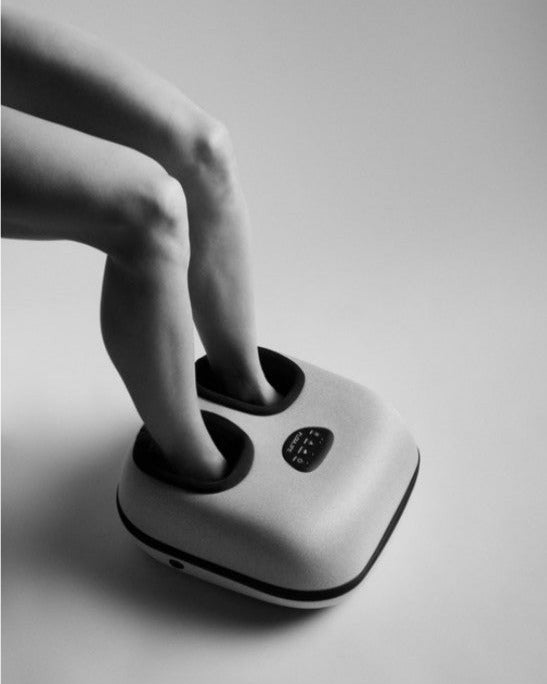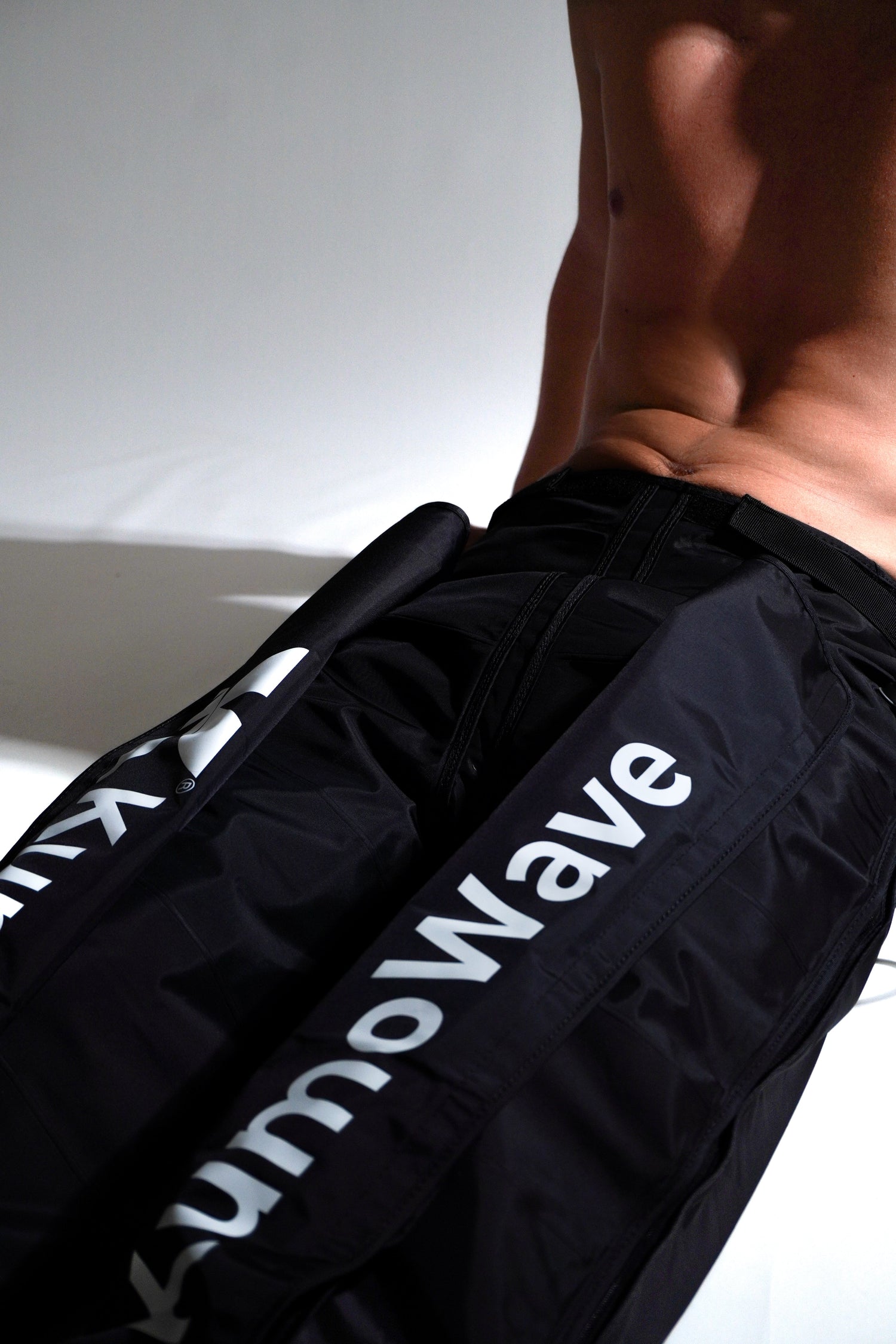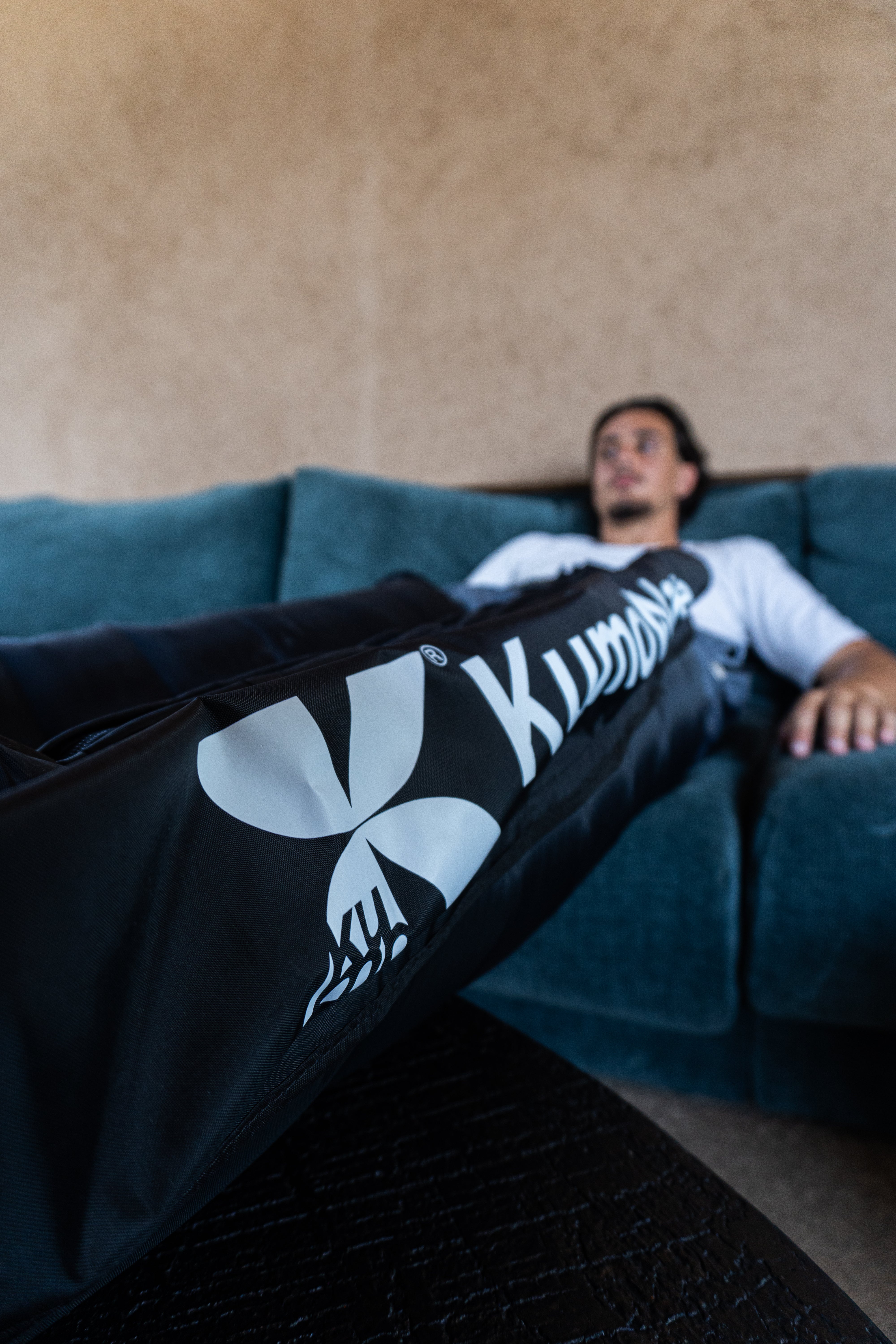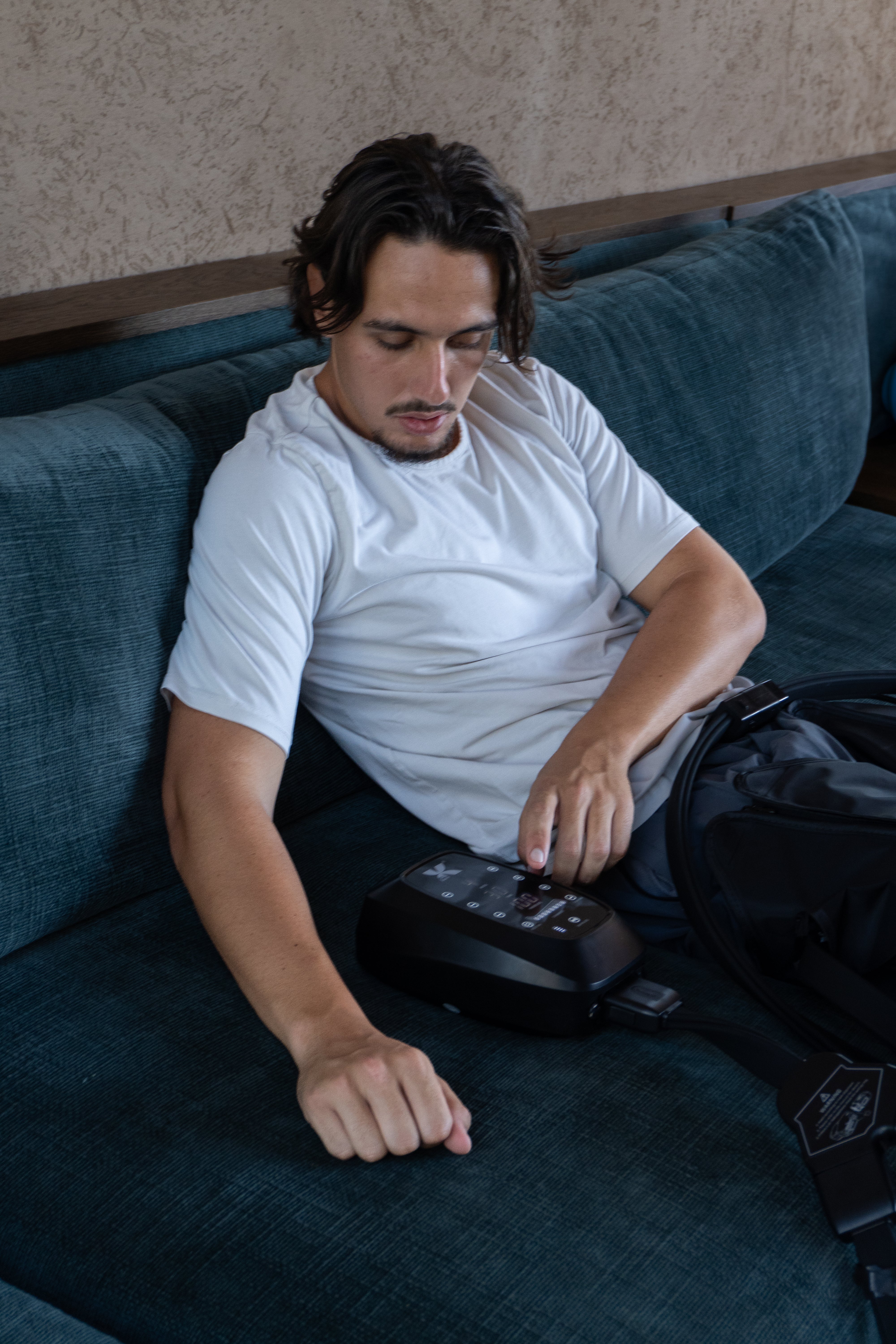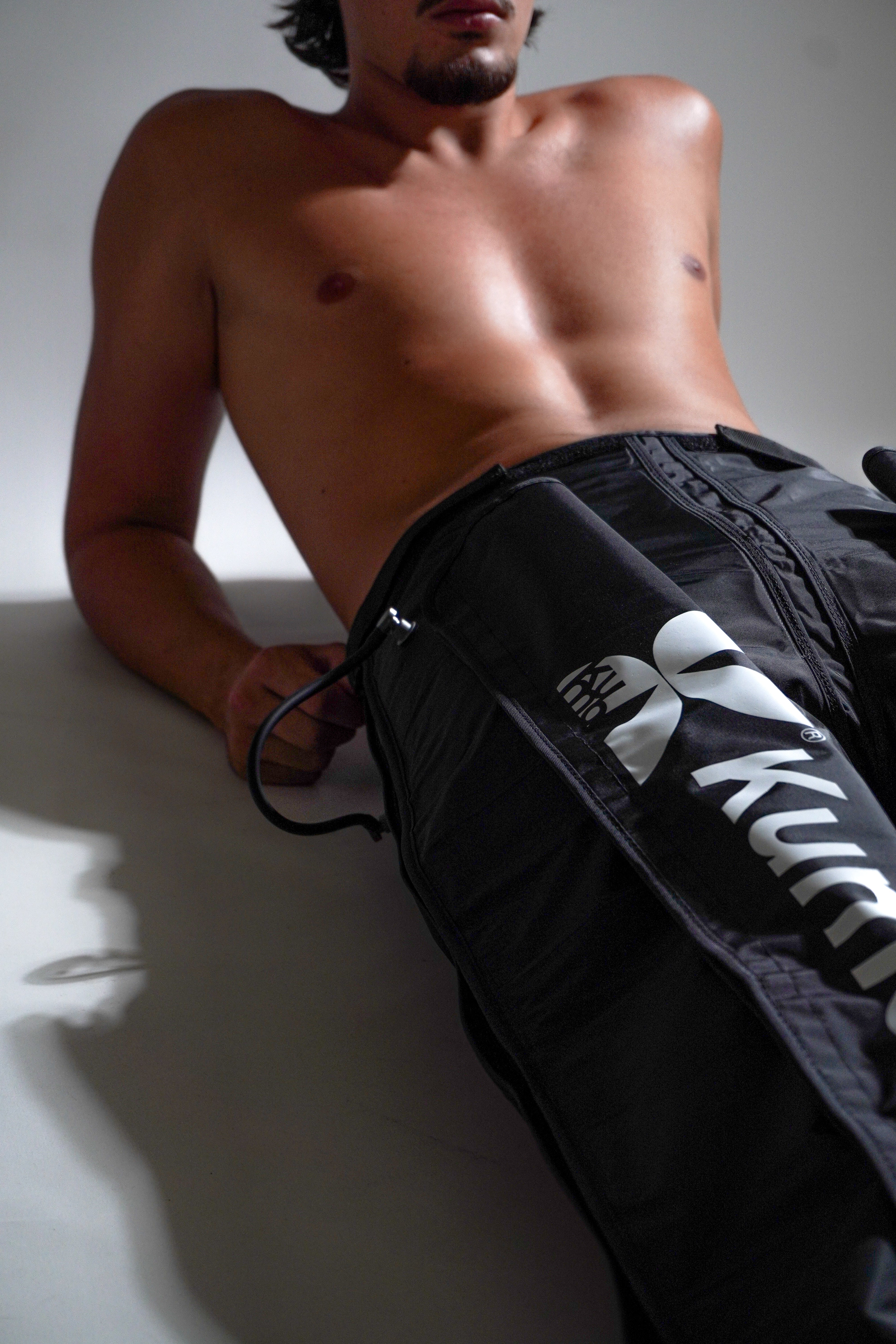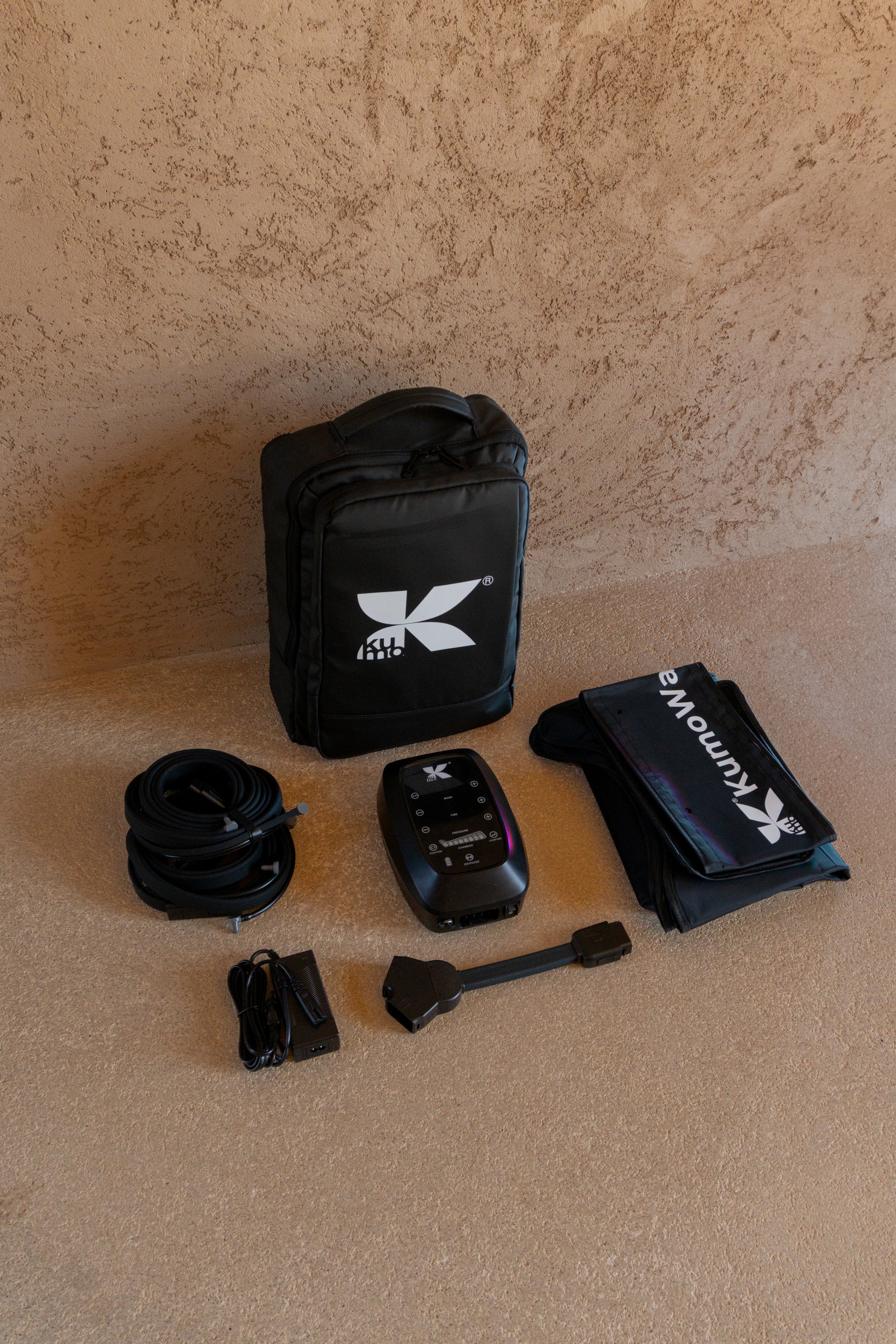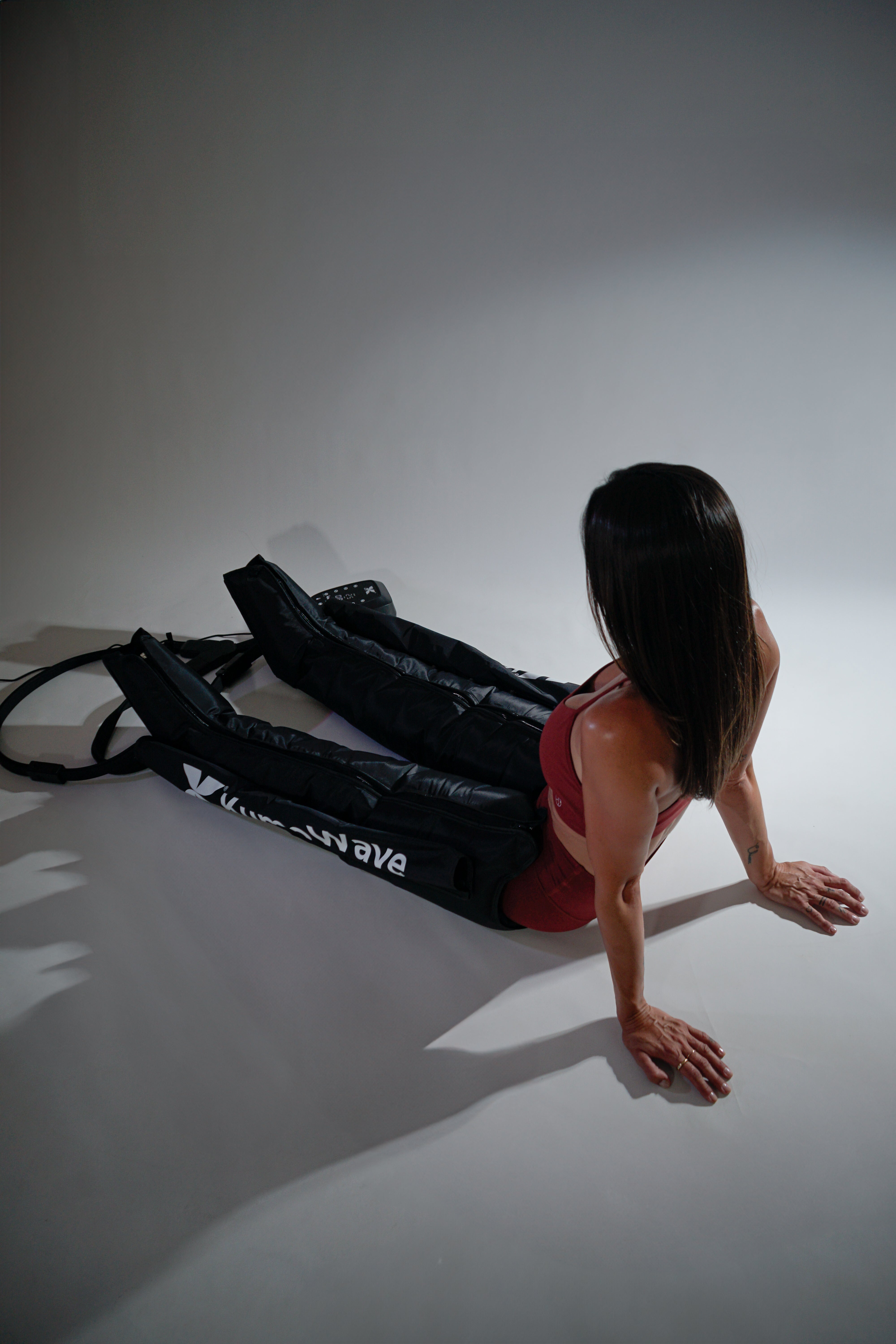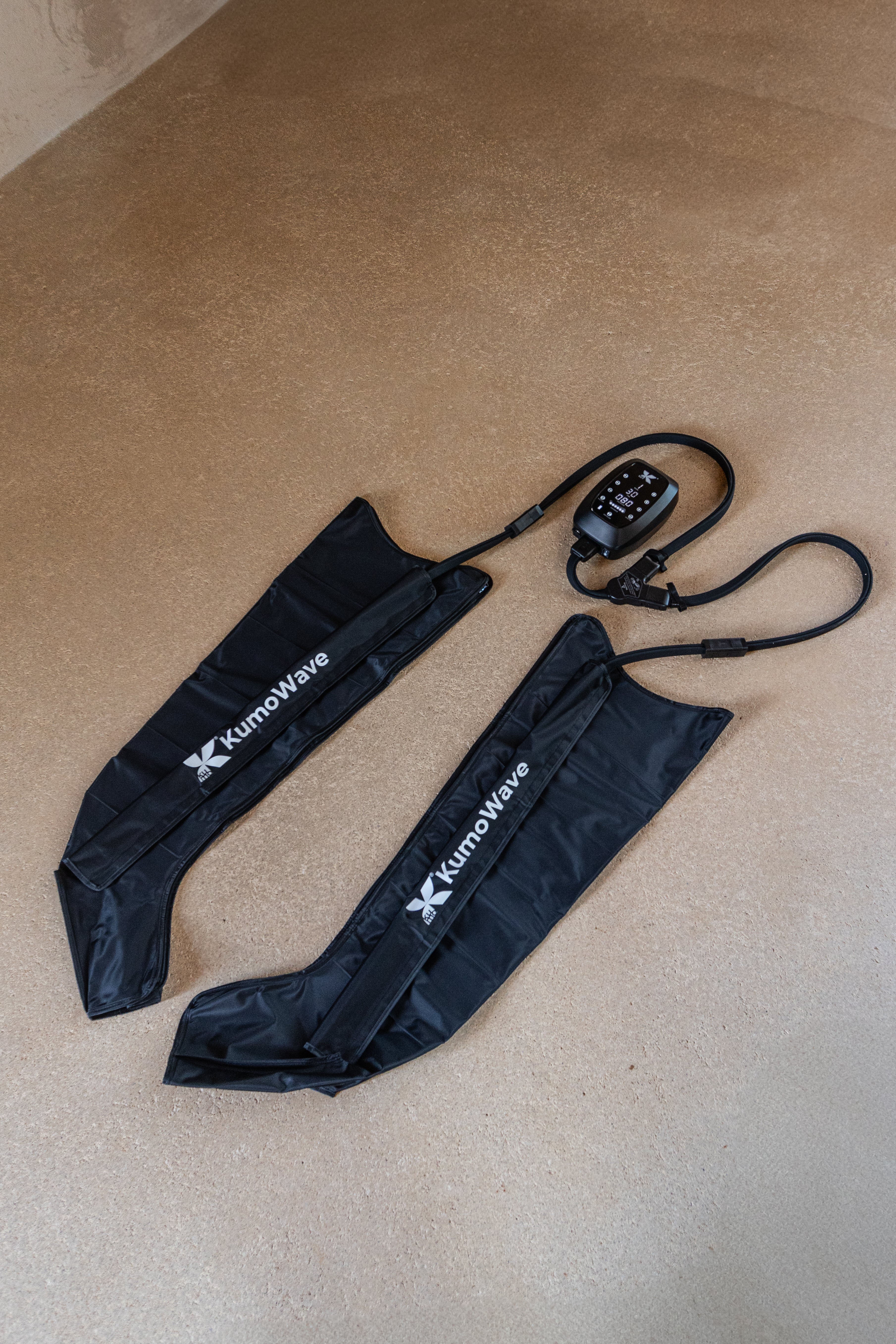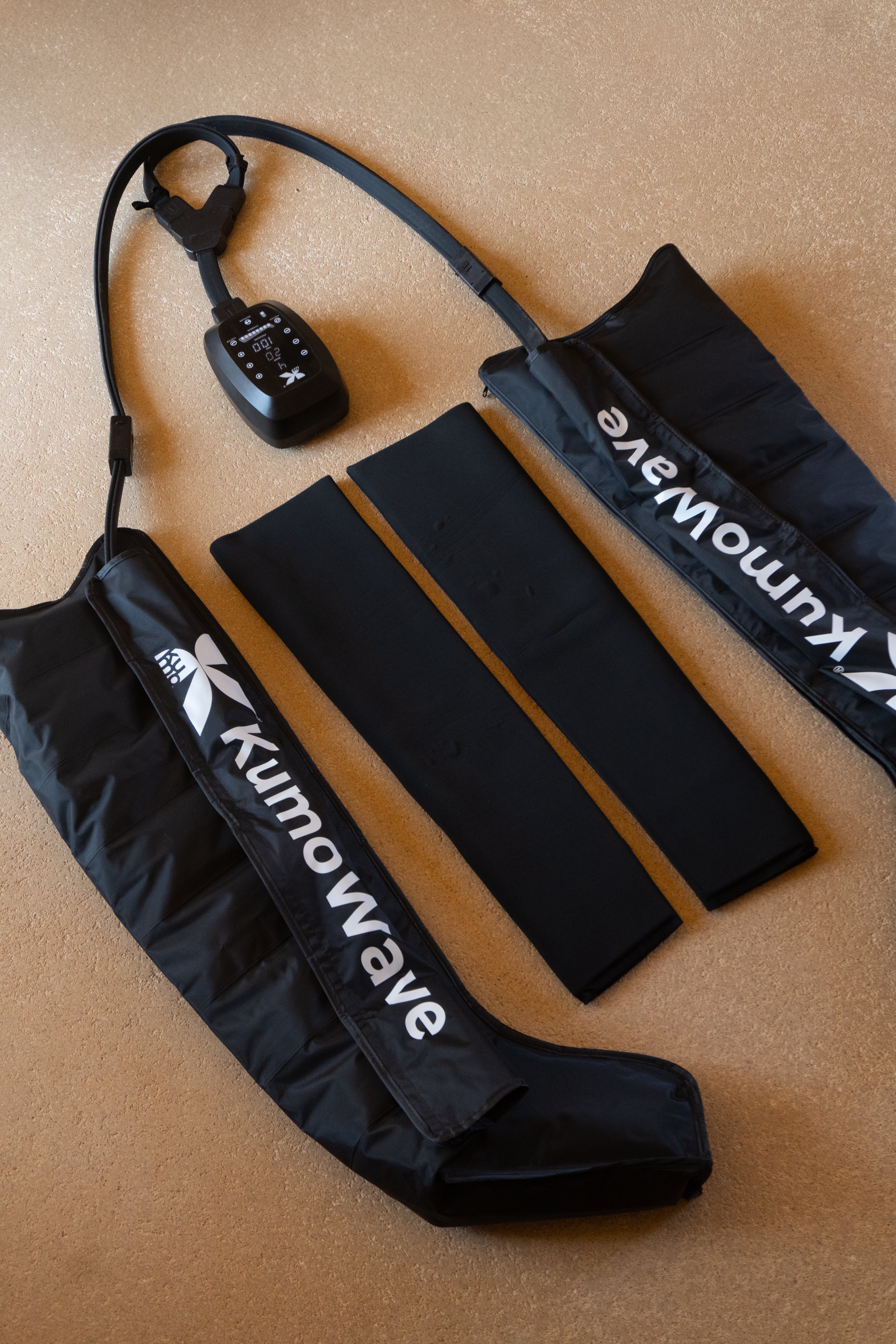Pressotherapy boots: How long and how often to use them. If you're looking for a quick response: 20–30 minutes per session works for most; 3–5 days per week for wellness; and 1–2 sessions per day during periods of athletic activity. In clinical cases (edema/lymphedema), 30–60 minutes per day under supervision is usually recommended. Below, we explain the nuances and how to adjust pressure, programs, and schedules according to your goals.
Coming soon
- 20–30 min per session for daily recovery; 30–45 min if the load is high or the legs are very tired.
- 3–5 days/week for maintenance; up to 1–2 sessions/day in training blocks.
- Guideline pressure: 30–50 mmHg in legs; start low and increase as tolerated.
- Leave 6–8 hours between intense sessions and avoid using them just before maximal efforts.
- If you have vascular disease, uncontrolled diabetes, pregnancy, or recent surgery: consult first.
How they work and why timing matters
Pressotherapy boots (intermittent pneumatic compression) inflate and deflate chambers sequentially to boost venous and lymphatic return. This pumping reduces stasis, mobilizes fluids, and can relieve the feeling of heavy legs. The length of use determines how much "drainage load" you apply: too short sessions are insufficient; too long sessions can cause discomfort or numbness. Starting with moderate durations and titrating based on response is the safest strategy.
- Key mechanism: distal to proximal compression, with inflation and rest cycles.
- Perceived benefits: less swelling, faster subjective recovery, lighter legs.
- Evidence: Pneumatic compression is used clinically for edema and venous return, and its safety/indications are well described in recent medical guidelines (StatPearls, 2023). Query: Intermittent Pneumatic Compression Devices .
Times and frequency of use according to objective
Well-being and tired legs
- Duration: 20–30 minutes per session.
- Frequency: 3–5 days/week; at the end of the day or after standing/sitting for long periods of time.
- Program: Sequential/Peristaltic with gradient; medium speed.
Sports recovery
- Post-workout sessions: 20–30 minutes within 2 hours.
- High load or severe DOMS: 30–45 minutes. Avoid very long sessions just before a maximum effort.
- Frequency: 1 session after the key session; for intense sessions, add a second session (morning/evening), separated by 6–8 hours.
Occasional fluid retention (travel, office)
- Before and after the trip: 15–20 minutes.
- On long journeys: 10–15 minutes every 2–3 hours, combined with walking and mobility.
- At the end of the day: 20–30 minutes to unload.
Edema/lymphedema (with clinical support)
- Usual clinical guidance duration: 30–60 minutes/day, with moderate pressure and monitoring.
- Recommendation: Always under medical supervision and in conjunction with compression garments and therapeutic exercise. Reference framework: International Society of Lymphology, 2020 and International Lymphoedema Framework .
Practical advice: If after 15–20 minutes your legs feel light and tension-free, there's no need to extend them; weekly consistency outweighs marathon sessions.
Key settings: pressure, programs and position
Pressure (mmHg)
- Beginners: 20–30 mmHg to assess tolerance.
- General use on legs: 30–50 mmHg.
- Adapted athletes: up to 60–70 mmHg if there is no discomfort or tingling.
- Signs to get off: numbness, stabbing pain, persistent redness, or deep marks.
Programs and cycles
- Sequential/peristaltic with proximal gradient: standard for drainage.
- Decompression breaks: promote capillary refill and comfort.
- Active cameras: Activate all for full coverage, unless otherwise indicated.
Posture and hydration
- Position: lying down with legs slightly raised (5–15°).
- Hydrate before and after; a 5-minute session of diaphragmatic breathing improves lymphatic return.
Protocols by user profile
Runners and cyclists in loading block
- 30 min after the key session + 20 min at night if there is heaviness.
- 40–60 mmHg; medium-fast peristaltic program.
- Avoid using in the hour before series or competition.
Office workers and long shifts on their feet
- 20–30 min upon arrival home.
- 30–40 mmHg; average rate. Supplement with ankle mobility.
- Days with more sedentary behavior: add 15 minutes to mid-afternoon.
Frequent travelers
- 15–20 min before the flight + 20 min upon arrival.
- 30–40 mmHg; incorporate walks every 60–90 min.
- Consider compression socks as maintenance between sessions (see clinical sources: Cleveland Clinic – SCD).
Sensitive skin or first uses
- 15–20 min, 3 days/week, increasing by 5 min/week as tolerated.
- 20–30 mmHg, slow program, thin sock for comfort.
Common mistakes that unnecessarily lengthen sessions
- Using high pressures to “speed up” results: prioritize tolerance and regularity.
- Crossing your legs or sitting slouched: limits the return.
- Skipping hydration and gentle movement after your session.
- Placing boots over thick clothing or wrinkles that mark the skin.
- Ignore early discomfort: adjust pressure and time immediately.
How to combine them with other recovery tools
Synergy with other therapies can allow for shorter sessions while maintaining results:
- Red/LED light after light training or at night to promote relaxation and sleep: explore our LED light therapy .
- Pre-myofascial release (5–8 min per leg) to release tension and improve emptying with pressotherapy: discover KumoPulse Air, our massage gun .
- KUMO Routine: 5' mobility + 20–30' pressotherapy + 10' breathing/LED. Learn about our philosophy at KUMO .
Safety, contraindications and when to reduce time/frequency
Do not use pressotherapy without medical approval if you have active deep vein thrombosis, decompensated heart failure, skin infections, open wounds, severe sensory disturbances, or unexplained pain. If you are pregnant, have uncontrolled diabetes, or have recently had surgery, consult your doctor first. If tingling, pain, color changes, or dizziness occur, stop the session, reduce pressure, and reduce to 15–20 minutes until further evaluation. Safety and Clinical Uses Review: StatPearls, 2023 .
Quick table of times and frequencies
| Aim | Duration per session | Indicative frequency | Suggested pressure |
|---|---|---|---|
| Well-being/tired legs | 20–30 min | 3–5 days/week | 30–40 mmHg |
| Sports recovery | 20–45 min | 1–2 times/day in load | 40–60 mmHg |
| Occasional fluid retention | 15–30 min | Before/after trips | 30–40 mmHg |
| Edema/lymphedema (with a doctor) | 30–60 min | Daily, supervised plan | 30–50 mmHg |
If you would like to see equipment and software options, please visit our pressotherapy collection or write to us by contact .
FAQ
How long should I wear pressure therapy boots after training?
For most people, 20–30 minutes within the first two hours is sufficient to relieve heaviness and promote venous return. On days with volume or pronounced DOMS, you can extend this to 30–45 minutes if the sensation is good and there are no tingling. Maintain moderate pressure (40–60 mmHg if you're already adapted). Avoid long sessions just before maximal efforts, as you may feel overly relaxed. Prioritize weekly consistency over very long sessions.
How many times a day can I safely use them?
During periods of demanding training or days with heavy standing, up to 1–2 sessions per day separated by 6–8 hours are usually well tolerated. For maintenance, 3–5 days/week is sufficient. If you notice numbness, deep marks, or persistent redness, reduce to 15–20 minutes and lower the pressure. For people with a history of vascular disease, consult beforehand and follow an individualized plan, especially if you plan to use them daily.
What is the right pressure to start with?
Start low to assess tolerance: 20–30 mmHg for 15–20 minutes. If comfortable, gradually increase to 30–50 mmHg (general use). Adaptive athletes can work at 60–70 mmHg, always without pain or numbness. Remember that pressure and time are additive: if you increase the pressure, there's no need to extend the session. Take a break if tingling or stabbing discomfort occurs, and readjust.
Can I use pressotherapy if I have varicose veins or edema?
Intermittent pneumatic compression is used in venous and edema settings under clinical criteria. For uncomplicated varicose veins or heavy legs, 20–30 minutes of moderate pressure may improve comfort. If there is lymphedema, ulcers, recent thrombosis, or chronic disease, seek medical evaluation: clinical protocols typically prescribe 30–60 minutes daily and combine pressure therapy with compression garments and exercise. References: ISL 2020 .
Can they be used during pregnancy?
Pregnancy changes hemodynamics and can increase fluid retention. Some people report relief with moderate compression and short sessions (15–20 minutes), but it's essential to consult with your healthcare professional before starting. Avoid high pressure and pay attention to any discomfort, tingling, or dizziness. In all cases, prioritize safe adjuvant measures such as leg elevation, brisk walking, and hydration.
To take into account
- 20–30 min per session covers most needs; 30–45 min on demanding days.
- 3–5 sessions/week for maintenance; 1–2 per day in loading blocks, separated by 6–8 h.
- Moderate pressure and sequential gradient programs are the key; adjust by feel.
- Safety first: reduce time/pressure when faced with discomfort and consult in case of pathologies.
- It integrates mobility, red light, and massage for better results in less time. Ready to make recovery a habit? Discover the proposal KUMO and choose your team in the pressotherapy collection , or write to us from the page contact for personalized advice.
